 |
Texts |
|
Peter Herrmann |
 |
News |
|
german version - 20.8.2018 |
Restitution, Trade and Africa
|
| |
Restitution is the return of objects that were once taken from one place to another. In the case of Africa, this currently refers mainly to works of art that were brought from a mainly rural environment for the purpose of a closer acquaintance, initially as curiosities in the cabinets of the aristocracy, then presented to a wider inquisitiv public in museums for ethnological education, and then served the art market in Europe and a little bit in North America. Objects of which, over time, it can rarely be determined whether there was any legal legitimacy for their removal from their original context.
Today's view of this topic is influenced by freelance art historians and ethnologists who, due to the lack of existing employment relationships, have to design their own fields of work in order to obtain project funding and thus new sources of income with suitable topics. They are supported by other disciplines in the humanities, which mix with various ideologies. This individual mix makes it difficult to make a neutral assessment that is independent of particular interests. As soon as morality is introduced into the debate, especially by people who are unfamiliar with African art, as a major argument,,discussions on the subject of "repatriation" are getting complicated once and for all, because art objects are thus placed in a canon of values that is initially alien to them.
Involved in these discussions about restitution, there are also a few scholars from various countries in Africa, mostly educated in Western countries, who declare objects to be "sacred" although they didn’t grow up in their supposedly sacred context. They often adopt the conservative reasoning of a European leftist that, in a role reversal, has been moving away from classical economic issues for two decades. Away from the topic of class struggle to discrimination, racism, gender, and neocolonialism. Now "History" is
|
 |
being mixed with these disciplines and a conspicuous moral claim, and its postulate is, in varying degrees of radicalism : all or at least most African works of art must be returned ! |
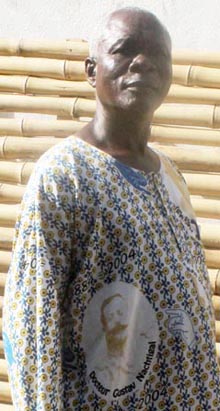 |
Beside trade, which fell into silence after each new law or new recommendation of behaviour over the decades, without delivering any discursive impulses worth mentioning, there is another grouping which pushes itself all the more violently into the foreground: So-called activists, who do not only demand the return of objects of art, arts and crafts, articles of daily use and human remains, but, going beyond that goal, also to clean street names of certain persons who still enjoy great popularity in Africa. They do not notice that some interesting critical approaches degenerate into emotional grotesques. Moreover, their applications for project funding are designed in such a way that they present themselves as the true guardians of what is good and noble, and not rarely do they receive government subsidies for this.
Given this background, it is very difficult to conduct even a reasonably objective debate. To this end, and herewith, I make an attempt from the point of view of an art mediator who has been dealing with African art for decades as a collector, trader, gallery owner, art expert and consultant. |
 |
| |
The very fact that many objects have been assigned some European monetary value, which they did not have when they were made, contributes to the obfuscation in the issue of restitution. Rural art, often referred to as "tribal art" in an undifferentiated way, was ordered in subsistence economies as a commodity exchange, or as a rarer variant, in a courtly setting under controlled conditions in exchange for a monetary value. There are first indications of bronze, i.e. material exports from Africa to China as early as the 8th century. The earliest bronze works in West Africa also fall into this period. Starting around the beginning of the 16th century, sub-Saharan countries began to trade with Portugal, Spain and, via Holland, with Central Europe. Beginning in the mid-19th century, growing interest throughout Europe led to the development of an export trade in arts and crafts from Africa on a large scale. The emphasis is on trade, not removal against the owner’s will. The first expeditions to collect art objects were already organized in pre-colonial times. The colonial era experienced veritable surges to supply the newly emerging ethnological museums and their middle-class visiting public as collectors.
Africans, thanks to the ethnological demand that emerged toward the end of the 19th century, could now sell an object at a sales value that permitted them to make new ones. Speaking of a "one-sided exploitation of a means of pressure", as it is widely the case, is wrong here as it is a generalization. Such an argumentation is only possible within an imaginary world in which a paradisiacal situation is assumed, with money as the Mephistophelian destroyer. But an African paradise never existed. There is also the popular myth of the glass beads, with which Africans were permanently cheated, and it can hardly be surpassed in its discrimination. How stupid do some people think "the" Africans are? Glass beads had a very stable trade value over centuries and were in great demand as a store of value and a means of payment. Just consider the value that Venetian and Bohemian glass beads have today In the modern reversal of the trade direction of jewelry from Africa back to Europe. Such arguments are not suitable for getting to the core of the problem.
Theft by colonial official, as emphasized in the current debate, did take place, but not on the scale assumed. Of course, art objects were also taken away under duress. Misconduct accompanies human history across all continents, without Africa being able to claim a predominance of suffering. In any case, it is confusing that Africa and Africans are portrayed as eternal losers, cheated and exploited. Quite conspicuously, this inferior victim role is ascribed to them by those who pretend to mean it particularly well with them and collect humiliatingly ridiculous alms for them. These are also those who see restitution as a kind of restorative gift, but without being able to offer a concrete reason for this generosity.
Many objects in Western museums are nothing else but replicas. Replicas from the spirit of the African non-distinction between original and imitation. Original in the European interpretation is something that was used in an authentic context. During the German colonial period, when this distinction was only rarely made, many people did by no means want a dirty object if its paint was peeling off, some edges already broken, and which stank of smoke and sweat. |
| |
They wanted the same interesting object in a new version - and the carvers were there. So you asked them, or more precisely, you gave them the order to make new objects of equal or even higher quality in terms of their appliques. And paid or exchanged. Even if today a handkerchief has nothing more in value, it was at that time, from African view, just as curiosity and desirable. Worth coveting. If someone wanted the "original" and came without bringing time for carving, this variant was from the African point of view quite as pleasant. There comes someone who buys the mask, on which the paint is already peeling and parts are broken off, at a price which one can commission a new mask and still give the family a nice feast to boot. |
 |
 |
Both trade and museums try to declare as many items as possible as "used", since "used" is equated with "authentic", whose value in the Western context is higher than that of a replica. For the dealer it is the individual profit, for the museum it means reputation. It is often forgotten that a museum also has a great interest in increasing the value of its inventory, since public subsidies also depend on it.
When in the 1920s mainly Baule masks and statues from the Ivory Coast were carved en masse because of their very popular aesthetics, no one in Europe made the distinction between replica and original. Today, however, dealers almost without exception upgrade all statues and masks of this period, with beautiful high gloss patina, which the objects did not have in the "original", with traceable age information to high quality, "authentic" provenance. There were not a fraction of looms in Africa - compared to the amount of weaving roll holders circulating today. And the number of famous Ibedji twin figures carved for twin births would multiply the real twin situation in Nigeria. The same applies to the Punu from Gabon, of whom there are more masks than the area ever had inhabitants. So, certain varieties of the African-European trade are suddenly forced into a high-grade "corset of predatory" by authors who are scholars of the humanities.
|
 |
Sacred, symbolic and profane
|
| |
The portrayal of greedy troops being on the move, stealing away Africans' possessions like church robberies, is rarely found in historical reading. And if so, then in a quite critical and self-critical way. Some publications on the subject are then spiced up with the lamentation that what was carried off was ever so "sacred". If one refrains from the veneration of relics and exaggerates the profane aspect, the figure of a Madonna figure in the niche of the baroque church is not sacred. It is first of all a wooden figure - not a fetish. If it is stolen, the loss is tragic for the community, but it can be replaced by the Oberammergau Virgin carvers. They, in turn, do not create anything sacred, but a reminder of a saint. This is a huge difference. Even in Africa, many objects are not "sacred". They are simply mediums to the sacred.
Within anthropology, this discussion about "fetish" had actually ended decades ago, but it was recently reheated. Unfortunately, this false conceptualization was reopened through the back door by ignorant authors of other disciplines, in which an aspect of sacredness borne of morality has again been made a subject of the discussion..
It seems particularly absurd when Nigerians sweepingly declare the bronzes forcibly removed by the British as "sacred." Courtly art is first and foremost ostentatious art. Art as a display of wealth and power. It is also the display of brutal campaigns that built the Benin Empire, whose power and wealth in turn is based on taking away the wealth of others. It would be pertinent if all those involved in the current discussions came back down to earth. In this context, a peculiar contradiction has emerged in Germany, when old monarchical rulerships are unconsciously to be reinstalled through "left-wing" connotated demands concerning art. Instead of placing representatives of old monarchies in front of the camera, it would be appropriate, for example, to place Ghanaian minorities there, whose ancestors were led away as slaves by the Ashanti and who therefore had no chance to accumulate any wealth.
Similarly, the Benin Empire was recently named in the press as a World Empire by a Nigerian who referred to an enormously long fortification of piled-up earth. This can be easily linked to a peculiarity of the occidental humanities: Where does this longing for the splendour and glory of monarchies, which ethnologists often convey in their treatises, and the urge of politicians to be photographed in the company of traditional potentates, come from ? Let’s not forget that today the major part of Africans are happy to live in a legal system that can be described as a product of the European Enlightenment and no longer in an archaic hierarchy of centralist kingdoms with human beings as their main export product.
To sum it up: A rainmaker figure is not sacred. By its shape, it is a more or perhaps less successfully carved object that serves in a communal ritual in which it is used according to the principle "form follows function", and that at a particular moment. In order to trigger a thermal-dynamic effect, a specifically designed object with motifs that increase the concentration of the participants is more useful and effective than a high pole that could serve the same function from a purely practical point of view. Just as very few masks are sacred because they appear in a religious context within, profanely speaking , a totally combined work of art of word, dance, acrobatics and music. |
| |
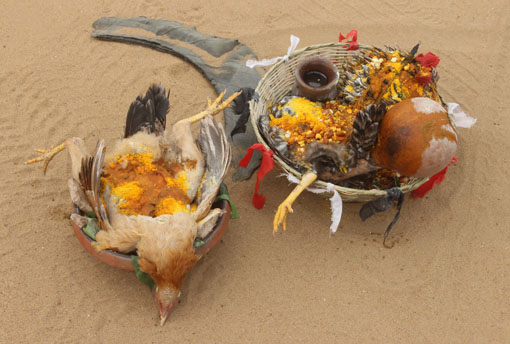
|
 |
I do not wish to start a discourse on faith, but these examples are intended to mark the boundary between the profane and the reliquary, and to show that not everything in a ritual context can be equated with "sacred." In addition, depending on the interpretation, something that could once be subsumed under the term "sacred" may have been "desacralized" through Islamization or Christianization. The personal context of those who, through common belief, used to declare an object sacred was lost in history. This reduces any restitution aspect to extremely few objects illegally taken out of a “sacred” context that could be actively restored.
Another example is objects with a symbolic content that refers to family or clan. The problem arises when people from Africa visit a museum, recognize a particular object’s historic tradition, establish a connection with its past family significance, and thus derive a claim. Most family members actually couldn’t care less about that former importance or significance because they have lived without it for a long time. But with great effort and a camera team, financed as a project by well-meaning people, this story is now being pursued in the home country of the object discoverer. It takes little imagination to expect the consequence: family members intonating with pride in front of the camera the explanations of former meanings and importance. This is how a large proportion of so-called documentaries are made, which revolve around the alleged significance of an object.
However, if one looks more closely at most of the cases I know of, and tries to understand their background, agreeing to return an object would open Pandora’s box. An incredible amount of quarrel would ensue. According to such logic, a gigantic international exchange would have to take place in Europe and Asia. |
 |
| |
As early as the first millennium of our era, the material we now call bronze seems to have been exported from Africa to China, while alloy components were brought to Africa by caravan routes from the part of Asia now called the "Middle East." Bronze-like alloys apparently had a higher value than gold in some regions of Africa in the second millennium, which in turn was suitable as an export metal because it was in extreme demand in Europe and Asia and made the ancient kingdom of Ghana, located in what is now Mali, rich. |
 |
From about the 16th century, the metal trade from an area now called Germany and Poland entered the fray, exporting mainly copper alloys and making Saxony, Silesia, Franconia and the Hanseatic League rich. Through trade. Not by exploitation and by extortion.
At a time in which the scale of values in the Western concept of art rates the spirit of the artist higher than his working time and his expenditure of material, every decorated spoon from Africa is praised for its artistic value, while objects made of metals, during their time exorbitantly expensive, are today simply esteemed according to their shape and thus often undervalued. To illustrate this by a figure. If a bronze statue in 17th century Nigeria cost more than the purchase price and lifelong board for a slave, and this figure is valued today at 5,000 euros, one could cynically infer a gross disregard for the value of a human being. |
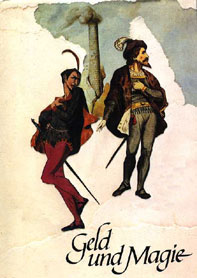 |
Africa has debts to Europe
|
| |
Was it Julius Nyerere who said that Africa had the best diplomats in the world? No one else would manage so brilliantly to gather so much money without anything in return. I think we can confidently include this aspect in the discussion about restitution when it comes to Africans involved. We do not owe Africa anything. Commodities have been traded for centuries and development aid has been given as grants, that is, donated. As far as I know, all African states have debts to European-American banks and more recently to China. If these loans have been misappropriated, that is a matter for intra-African consideration. If one looks at the debt trap as a capitalist principle from a conservative leftist point of view, Africans can‘t claim a special status, but, derived from this thought, it equally hits the European middle class and the underclass and the rest of the world as victims. From these political-ideological and very general points of view is an almost impossible to derive the right to hold anyone responsible.
If a claim for restitution of art is made at all, which on closer examination is not at all a common African attitude, it is mostly concerns objects from an extremely valuable context. It is interesting, though, how the modern valence has come into being. In many cases, it was the interpretation of the European who placed the object in the light of his technological lamp. His invention of the museum, climate technology, conservation, restoration, entrance fees, printing technology, insurance value and advertising made many objects from Africa what they are today: Valuable objects – but completely without any contribution from an African man, not to mention an African woman. In the non-preservation culture of vast parts of Africa, many carvings that are expensive today would have become food for insects there, never to be seen again. Think of the waves of Islamization that put wooden objects on the pyre as late as the end of the twentieth century in Mali and Côte d'Ivoire, only a few of which were saved by traders. Or of fundamentalist Christianization, in the case of which a high degree of mental acrobatics is required to now blame the “Europeans” for its maniacal destruction of "pagan" cult objects, just because they once brought the Christian idea to Africa. |
| |
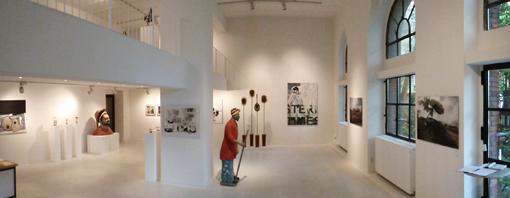 |
| |
Peter Herrmann Gallery in Berlin up to 2013 |
 |
Delving deeper into these outlandish oddities which are responsible for the interaction of collectors, traders and ethnologists when creating and defining values would go beyond the scope of this article. At this point, by the way, I would like to emphasize that the masculine enumeration of the three groups is completely correct. Women have become relevant in the subject of consideration only in recent times and have added to the discussion the unfortunate topic of equating a postulated oppression of the Africans with the oppression of the European woman, thereby bringing an even very strange coloration to what in Europe is called science. This view may be justified in a left-green discussion group, but not in a restitution discussion. Viewed in the context of values, this new consideration only increases the number of Western problematizations.
As an example, a text from the Bode Museum in Berlin. 2018.
Der Prozess des Vergleichens und des Zuordnens ist also kein neutraler, sondern ist geladen mit gesellschaftlich geprägten Vorurteilen, Konventionen und Geschichtskonstruktionen. Er ist auch stark abhängig von den Erfahrungen der Menschen, die den Vergleich anstellen. Die Aussage, ob Sachen ähnlich oder andersartig sind, hat oft auch mit Macht zu tun. Dadurch ist das Vergleichen eng mit Themen wie Sammlungsgeschichte, Ästhetik, Kolonialismus und Gender verbunden. Diese Themen werden in der Ausstellung und der begleitenden App von verschieden Perspektiven beleuchtet. …. Die Präsentation lädt ein, die eigene Haltung des Vergleichens zu hinterfragen.
(The process of comparison and attribution is thus not a neutral one, but is loaded with socially shaped prejudices, conventions, and historical constructions. It is also highly dependent on the experiences of the people making the comparison. Stating whether things are similar or different often has to do with power as well. As a result, comparison is closely linked to themes such as the history of collecting, aesthetics, colonialism, and gender. These themes are explored from different perspectives in the exhibition and accompanying app. .... The presentation invites visitors to question their own attitude of comparison.)
The Siren Song of Snowflakes |
 |
| |
Another important aspect is the question where to actually lead back to? To a specific locality? Back to a monarchy, which today no longer has the former significance? Return to a nation-state?
First of all, a repatriation claim would have to ensure that there had been no consent of the African owner at the time of acquisition. But that’s where the problem begins: Who was the owner in the past? A community ? A person ? In the case of a community, there may have been persons who, for example for religious reasons, had an interest in disposing the traditional stock. There were situations where bona fide traders were sold something and it was later claimed that the seller had not been legitimized to do so. Legally, the problem lies with the African side. Would he have been allowed to sell, would he not? With all due caution: even though inquiries may have been conducted or not, a trader cannot be held responsible for such circumstances. Traditional Africa has no written culture with purchase or manufacturers’ invoices. The most difficult thing is to judge whether something may have been acquired under pressure and only consented to by some inequality of power. But permit me a simple comparison: May I sue my tax office because I had to sell my art too cheaply under the pressure of my tax burden? A rather slippery topic….
|
| |
Two simple but very interesting questions: Why do people in Germany worry so much about problems that affect France or the British? Is "guilt" already an imported article? |
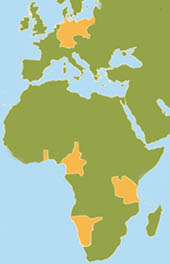 |
Since in Germany the discussion about "looted art" from Africa is mainly about the art of Nigeria, I would also like to focus on it again.
As someone who lived in Nigeria for a long time, I initially developed a point of view that partially solidarized with the Nigerian one and regarded the much-cited campaign of the British in 1897 as a campaign of looting. But apart from the fact that my legal and military knowledge is too limited to take a clear position, the question also arises here: if back, where to? Both representatives of the Nigerian museum authorities and local monarchical voices do not specify exactly what is actually requested or desired from this art contingent. |
 |
So far, the only concrete demand from the Nigerian side is when one of these objects appears on the market or in public outside a museum. Because at that time the British meticulously numbered, archived, described, cataloged, photographed and interpreted, it is now possible for art historians to become aware of these works of art. Recently, the current local monarch of Benin generously told the German press that he wanted only part of it back, and that he would put it in a new museum to be built. But which part? And museum as a promise? And paid by whom?
Personlly, I do not think much of this variant, even though I find the idea of a new museum in the city of Benin quite attractive. Rather, this seems to be a not too serious attempt to get hold of lost possessions. Should there be a return, then to the legal successor of the British colonial authorities, namely to the Nigerian Republic, but not to a disimpowered monarchy and then to a private museum. So at the moment, important arguments stand in the way of the "return" because the basis for any discussion and the decision for a future place for the objects are missing, even in the case that a legal claim would be enforced, which is not clarified, either. Another complicating factor is that figurative art does not arouse any particular interest in a government dominated by Muslims. Their few million euros value by Western standards are not worth the effort of negotiation. Because if Nigeria could ever get something back, it would be under the condition of not being allowed to sell and other moral and legal terms, which makes a value tend towards zero.
If it is about the museum aspect and thus a historical, educational and didactic aspect, why are the lost objects not simply recast? Qualitatively, this would be no problem at all and a nice job for local foundries. This statement, once again, against the background that traditionally in Africa the difference between "authentic" and replica is not known in the European sense and many motifs like those of a commemorative head have been a replica of a replica for centuries anyway, according to the same criteria. When I was last in the small museum in Benin City a long time ago, I saw only replicas. But not because originals did not exist, but because "museum originals" were more valuable to collectors. Fakes of "used" items are made for profit, because Europeans can be taken for a ride. Not for their own needs.
With regard to antique arts and crafts, Nigeria's legislation is almost incomprehensible. As far as antiques are concerned, much still seems to be an unchanged legacy of the British. With well-intentioned hurdles to prevent an art sell-off of the country, but starting from completely wrong figures. And probably also to secure the value of the objects already with them through exclusivity. Post-independence export regulations that no one can comply with, and import regulations that make every dealer despair. After all, Nigeria is not one of the most corrupt countries on earth without reason. Nobody is born corrupt. However, if he lives in a country that is unable to make laws so that a large majority can abide by them, he will be guided by the "laws" of arbitrariness.
An example from the eighties of how corruption arises: The import duty on a used Mercedes was 500% of its new value. Even for a vehicle that was sold second-hand in Germany at 10 % of its original price. At a time when Lagos, with a population of over 10 million at the time, was already collapsing in traffic, no vehicle was legally imported duty paid. The situation is similarly absurd with the export of old art and decorative arts. In principle, everything is forbidden: New, old, textile, wood, clay, bronze - but no one complies because no one can comply. Except, of course, the good Germans who wish to protect Nigeria's cultural property without knowing the country. And of course the Nigerian customs at the airport, when they can make trouble for an outgoing tourist because of souvenirs, and this is one of a thousand reasons why Nigeria has no tourism. |
 |
 |
Antique dealers - I will stay with the extreme example of Nigeria - can only appear in public at high risk. The extensive non-observance of its own laws by state institutions for decades does not mean that they are not there and are applied in arbitrary situations. I would like to recall René David, who was probably the world's largest dealer of Nigerian ancient art. He was one of the few ever to be recognized as an official exporter by a then Nigerian government, which was an admirable achievement against the backdrop of legal chaos. But even he, despite or because of money, became a victim of arbitrariness and one day found himself in a cell.
An interpretation of perverse laws changes from one government to the next, instead of adapting the laws. This repressive climate leads to dealers not taking advantage of the theoretical possibility of applying for an export permit from the museum authority because they could be accused of bribery by the next government. So, pretty much without exception, all antiquities were exported across national borders without permission from an - assumed - corrupt ministry and sold in neighboring countries. In the francophone countries, a clearance certificate from the authorities is sufficient to be allowed to export, which means that from here on all transactions were and are legal and could be legally imported into Europe. The art-historical research of Nigeria, which does not have a sufficient overview, is left behind. The Nigerian state is not interested in such things, just as other African states are hardly interested in them.
However, Nigerian research is also lagging behind in Europe. When, in 1997, the art historian Ohioma Ifounu Pogoson of the University of Ibadan received a scholarship from the Akademie Schloß Solitude in Stuttgart to research the whereabouts of Nigerian bronzes in the Germanspeaking world, he found himself in front of closed doors. According to his assumption, the museums were afraid that he would use the findings to derive restitution claims.
Because of this legal situation and the often complex discussions, the situation within trade looks difficult. As a consequence of the stylistic device of lurid emotionalization of the press, he sees himself pushed into the role of the person responsible for cultural theft and transgressions of the law. In Germany, the press primarily interviewed politicians, academics and activists, but from the trade only a legally experienced representative of the first league far away in New York. This first league, a small group connected by its own rules of the game, plays a separate role with a few ethnologists and large auction houses, which distinguishes it from other traders. They and their interviewed representative do some harm to the rest of the European-American trade, but they especially do harm to the African trade, which was absent from all the articles I have on file.
The accompanying texts that the aforementioned dealer used to write at Sotheby's implied that any of the objects he described "might" come from that contingent of the British and also subtly but consistently implied that the rest of those on the market were fakes to thereby increase their own revenues. Among about 200 objects I observed in this regard in auctions of the major auction houses over a period of about 30 years, only two were really from the British contingent and immediately caused an international uproar, triggered by Nigerian art historians. The rest of the offerings came almost exclusively from trade lines across West Africa in recent decades and were then ennobled - via supposed provenance - in the auction houses' text. This dealer, of course, welcomed anything to do with repatriation and restrictions, as the top price segment benefits when quantity is reduced.
The African trade, however, has no mouthpiece. With terms like "looted art" it is indirectly stigmatized, and documents that are non-existent or only costly to obtain add to further trade disadvantages. Apart from small-scale trade, the African trade can at best perform messenger services for that first occidental league in order to overcome the hurdles of borders. Once the objects have arrived in the European centers, this first league has money and thus time to place these objects, initially unrecognized by the public, in participating collections, to let the provenance "age" there leisurely, and then to offer them beyond disturbing recommendations of UNESCO or a cultural property protection law via upscale auction houses. From the African point of view, one might console oneself if this were only an incestuous game of financial magnates. But the disturbing fact remains that the African traders are accused constantly by the money aristocracy as counterfeit salesmen, and this is spread in the press.
In contrast to the author, African traders lack the knowledge of technology and laws to be able to do the following: As early as the 1990s, the only effective means of addressing stigma and ambiguity in one’s trade seemed to be going public immediately by presentations in exhibitions and illustrations on the Internet. What had been only a fulfilment of recommendations in order to protect one's own reputation until the ratification of the Cultural Property Protection Act , became, after 2016, almost a must in order to fulfil the requirements of a law that makes no sense at all for Africa. It is absolutely impossible to be able to state a provenance in Africa more than thirty years back, as the new law demands. So again, Africa is disconnected from the market or forced to cheat. Its "originals," defined as such by the Occident, must now be sold by the Africans as copies in order to avoid contradictions and risks and to be able to sell at all. For family businesses of traders, which are already in the fourth generation in various centers of Africa, this means a bitter loss.
It will be a long time before an effective publication for Africans as a legal safeguard will be possible. After all, it is not just "illustration," but an effective platform that must be created so the illustration has an actual resonance that will stand up to a court of law. Excessive protections must be provided because in Germany laws are made by lawyers for the benefit of lawyers. The recommendations of the UNESCO Convention include an objection period of one year, which gives African states the opportunity to object or complain if an object should indeed have been traded illegally from their point of view. The Cultural Property Protection Act increased this to three years as a squishy "duty" in key European countries, under threat of severe penalties for non-compliance.
The new Cultural Property Protection Act, which African dealers have so far been unable to comprehend either in terms of its content or the possibility of complying with it, has had a particularly counterproductive effect in West Africa, because ever since it came into force the unsettled European collectors have been buying much less, which in a sense has now given the export market the final push into countless business failures. Collectors are now buying from the European auction supply from collections long established there, and young potential buyers prefer to turn to unmined collecting areas. Always, even before 2016, objects from particularly restrictive countries were exported through countries that have a functioning administration without corruption and which issued export licenses. This principle has not changed, but everything is reformulated. So, by unnecessary complications, an unnecessary hurdle has been created. Some laws in some European countries, including Germany, are made far from African realities.
After a few years of waiting, the German trade was relieved to find out, that almost everything can still be imported. Little from sub-Saharan Africa is rated as "archaeological cultural goods" with special handling, and export papers made so far satisfy German requirements. But stigmatization works in Africa. A long-cultivated distortion of history with accusations of forgery, which will be illuminated in the following chapter, a cultural property protection law that is difficult to interpret, and third, the media's "looted art" are prevailing.
One clearly visible effect is: In a situation of extreme migration, where people are looking for ways to support Africa financially, Germany is tightening the law at the same time, thus severely damaging one of the few export markets Africa has at all. |
 |
Restitution and Falsification of History
|
| |
René David, well known to collectors, was the first to organize a so-called restitution. Actually, three of them. One of them to Nigeria. There has been much speculation about his reasons, but that has nothing to do with what I want to discuss. Together with his son, he returned 220 bronze objects to Nigeria. Whereby first the sum is worth looking at. After all, that was only a part of the many objects that passed through the hands of Mr. David for decades.
Why do I emphasize this? The first league of the art trade, ethnologists influenced by them and with them the large auction houses, operate history falsification in completely large style. They claim that there are 4,000 bronze objects, almost all of which are in museums. So if one of these apparently extremely rare bronzes finds its way into the trade, so the logic we are told, an exorbitant value is retrieved. This completely baseless claim, baseless for 100 years, is maintained for pure value protection reasons. Just calculate: 2,500 bronzes from the so-called looting campaign, plus 1,500 estimated to have been exported from Nigeria before 1900. And then René David alone has around 500 to 1,000 exported objects, of which he restituted 220 in one action, all recognized by the Nigerian state as ancient and authentic. The author has also had in his hands around a thousand tested and untested old objects, and the laboratories for thermoluminescence analysis countless thousands. |
| |
What is interesting about this example of repatriation is not just the quantity. All of these Nigerian objects were acquired by René David in Nigeria and in Togo between 1970 and 2000 - a period of time of which the big auction houses in association with almost all ethnologists claim that only fakes arrived on the market. If now the Nigerian government and the Nigerian museum authority take back with large diplomatic expenditure all these bronzes examined in different laboratories in each case several times, then this does not diqualify them for fakes. How do the ethnologists who are currently crowding into the Humboldt Forum and have repeated the nonsense of forgery as a litany unchecked for several generations now want to change their minds? How do they want to cooperate with Nigeria without taking its position, which is based on far greater quantity? The author's opinion in terms of art history and quantity reflects, in broad agreement, the opinion of all Nigerians I know. |
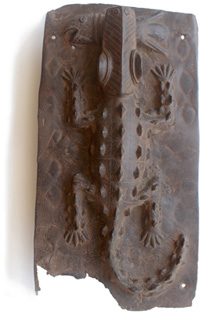 |
 |
Vicariously, I look forward to the acrobatics to be expected in favour of the Nigerians after ethnology has torpedoed their trade and profits for many years. This retracement has taken a strange turn, though. |
Media, Sensations and: Looted Art
|
 |
State project-funded German journalists slide on their knees in front of the local ruler of Benin and have to say: "Long live the King of Benin" and do this only to get a completely succinct and banal statement, which then appears just as terse in one of Germany's largest daily newspapers as the ripper "looted art", coupled of course with the theme "restitution". This arrogant, revisionist and pompous behaviour of a local monarch that should not be supported. I try to imagine that the then Federal President Dr. Horst Köhler would have demanded that I get down on my knees and say "Long live the German President" when I was invited. I would have gratefully declined a visit - even though I wish Mr. Köhler a long life. There is something repulsive about the gesture that lies in such a submission of guilt and atonement based on nothing. The art from Nigeria in German museums has been bought, and the monarch is a local relic within a republic that should certainly be treated with respect, but not with such obsequiousness to then puff up in Germany and waffle about discrediting "robbery."
The sales of art commandeered in the city of Benin by the British during their campaign already mentioned were only one of many sources within the European trade. In addition, there were countless others. It is controversial to interpret the acquisition of bronzes from the British at that time in retrospect as an absolute illegality.Mind you - at the time, most media presented what is regarded today as looting as a military strike and a legitimate retaliatory action, which happened constantly and worldwide during that epoch. It was then that these looted objects, which were only part of an offer, were bought in good faith by German museums. If, detached from history, interventions are interpreted differently over a century later, this does not mean that everything must have been illegal at that time and in that context, and cannot be limped together with crimes of German National Socialism against concrete individuals.
Proponents of restitution forget parallel to the sales from the campaign, there was a trade in objects legally acquired and exported from Nigeria. This flourishing market exceeded that the confiscated articles by many times during the years around 1900. The British retaliatory strike paradoxically spurred a new market in Benin, and artists would jump on that bandwagon ten years later. Whether Felix von Luschan, Pea-Sausage-Knorr, or Encyclopedia-Mayer, all these great patrons and purchasers for museums all bought from several of these sources, which is why no claims of ownership were ever made on the part of Nigeria.
Let's remain briefly with the city of Benin as an example. Of the contingent which is interpreted on one side as looting and on the other as cost compensation, a part is simply metal scrap from an artistic point of view. This part had some value in the context of science, but no value as art, and is likely to be the explanation why the generous ruler's descendant wants only a part of it back. In the whole discussion – loot or no loot - at least half of those 2,500 bronze objects mentioned is regarded as not particularly outstanding pieces, and a part of these reduced as actual metal scrap from a dump. Important, expensive objects had been taken away by the Beninese during their escape from the city, which they had prepared over weeks - and they later came into the trade completely legally.
As a symptom of the new German "Angst", press articles must emotionalize constantly, and it is written that the suppression of one of the last independently acting monarchies in Nigeria would have left a trauma that is still effective today. Just to rationalize even such unnecessary influencers of a debate in brief: An essential component of British colonial policy was the acceptance of local hierarchies, and even for Benin, a successor was again appointed. If sources from the 19th century are to be believed, the then current ruler was not popular, some subjugated ethnic groups were happy about the loss of importance, and the supposed trauma was just barely acknowledged, for example in the populous Islamic north of Nigeria. Curiously, hardly anyone talks about the countless thousands of bronzes of other ethnic groups, which are just as good in quality as those of Benin.
It's not entirely unimportant, either, io have a look at the exaggeration of the importance of the confiscated objects. The value, that is, the price of bronze as a material, fell extremely in the middle of the 19th century and never rose again. Measured in terms of the quantity of objects produced since about the 12th century, the material loss to Benin was marginal. And again, in comparison with other military conquests of the era, the capture of Benin and the reduction of a kingdom' importance was also very harmless in nature. In Europe, the sale of the bronzes received so much attention only because it contradicted the strategy of some colonialists to portray Africa as excessively backward in order to generate financial resources. The bronzes were supposed to refine the image of the backward savage for scientists around Felix von Luschan and to serve as an argument of the humanists for how developed Africa actually was. Both views are not tenable from today. Already at that time it was a journalistically pepped up battle for two camps. Some said that the Negro was incapable of such craftsmanship, and others said that this was a misconception and that the bronzes were not fakes made by secretly smuggled-in European craftsmen, but by local masters.
The current exorbitant value on the art market for a few pieces is, as already described, a game that will foreseeably come to an end. In the long run, it will have to be acknowledged that it is not a few dozen that are special, of which it is smugly implied in the accompanying auction text that they "could" be part of those 4,000 mentioned, but that there are between 20,000 and 50,000 bronzes of this quality and provenance from southern Nigeria distributed worldwide, all of which meet the claim of value by beeing "older than 100 years." No one knows how many objects are still in family possession in and outside Nigeria today. The interesting thing is that the campaigners for restitution are assuming a far too high value of the first league dealer's game, not realizing that falsification of history is the basis of their outrage. Quite incidentally, they thereby belittle the real achievements of the guilds and workshops, supporting a historically discriminatory approach. |
 |
Ethnology and Politics. France and Germany
|
| |
For decades, classical ethnological museums have witnessed declining visitor numbers, a development which they try to salvage with strained activism and petty world culture claims. They are bubbling over with children's programs, bazaars and changes in terminology. It is forgotten that ethnology has had its day. Some of it belongs to sociology, some to art and art history, and much to the dustbin of history. Done. Over. Gone. All this noise and pomposity about guilt and restitution is nothing more than the last gasp of an old engine before piston seizure, along with a questionable Berlin palace replica that, no matter what is done in it, will merely be a tourist attraction. All the accompanying Calvinist self-incrimination orgy serves only to preserve the last few jobs for ethnologists. In Africa itself, people are not interested in any ethnological background. Most of what is in museums and collections in Europe is, from the African point of view, comparable to the European garden gnomes, and they continue to be produced just as unbrokenly in a huge mass.
And even the contemporary art market with its bureaucratized museums and cultural institutions has so far had so many repulsive details that people in Africa are obviously in no hurry to participate in this whole circus. As a prognosis, I dare to say that the interest in contemporary art will increase and in the long term, people will also want a historical museum, but they certainly don't want an ethnological museum. To get to know other peoples and world cultures, people have the Internet. For these reasons, it can be explained that in West and Central Africa, these discussions about repatriations are conducted far less excitedly than in Western Europe. A look at Nigerian discussion forums on the Internet would certainly relieve one or the other German snapchat of her feelings of guilt. |
| |
If Mr. Macron, as a French liberal populist, now calls the past of his Grand Nation a crime, or if this is interpreted into his statement, referring to Algeria, this is clearly going too far as general term. One does not have to be an advocate of colonial policies to see that in huge parts of Africa, it was precisely this policy that brought about a development desired by Africans and considerably curbed the feudal structures and human trafficking mentioned above and brought new prosperity to the countries.
|
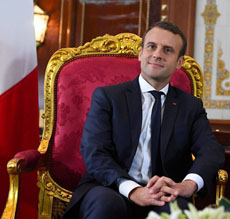 |
So, this should read correctly : Yes, crimes were "also" committed during the colonial period. |
 |
An era as such cannot be a crime. Would then all people of that time be criminals according to the sweeping interpretation of some activists? The doctors who healed, the craftsmen who built, the lawyers who tried to install justice in a modern way, architects who designed outstanding buildings, engineers who constructed bridges and railroad lines, pastors who preached human rights - all criminals? How then does this relate to, lets say, Libya? From Africa's point of view, the destruction and murder of Mr. Gaddafi was a crime and destabilized half of West Africa. Are therefore all today's Europeans criminals and is democracy a criminal system? Its worth mentioning that Mr. Macron behaving in rather imperial attitude was supported in his election campaign from a foundation owner from the Republic of Benin. With politician-known moral gibberish as one hand scratch your back and you scratch mine, Objects from a French museum are now to travel to Africa. The chutzpah with which Mr. Macron falls back on national property in his personal settlement suggests some sort of Napoleonic kinship. There is, after all, an enormous difference between France and Germany in their relations to Africa. Just because we have been defrauding the rest of Europe together for a few years now does not mean that our past should be amalgamated for friendships’ reason.
But some things are identical. What is in the museum belongs to the people and not to a temporary government. In the beginning, ethnological museums were usually established as foundations and financed mainly by trade. So initially a cooperation of science and business, in which modern politics cannot now claim a right of disposal.
After former German president Köhler, who can be considered the only German president with a real affinity for Africa, was made to disappear into oblivion, he still intended to take care of African cultural matters in his presidential retirement. My plan, which I proposed to him during his presidential term, to present about a hundred objects from German museums as a first balloon to the state of Nigeria as a donation with newly attached conditions, met with his interested approval.
From very blurred statements of René David shortly before his death, and unfortunately already after two strokes of the brain, I could only assume that all 220 objects, which he restituted to Nigeria under great diplomatic uproar, reappeared on the market for three times nothing. I was able to acquire three of them in Lomé. In the case of one of these three, all the expert reports and other papers were still available. All investigations revealed that the bronzes had not been stolen before their renewed journey to the market.
In view of such experiences, ethnologists and museums understandably refused to release them. Not forward to the public - there were constant expressions of will - but when it became concrete, any willingness disappeared. In order not to repeat such a useless and unprofitable process of misappropriation, I made the suggestion to Mr. Köhler that about fifty of these hundred objects might be offered on the international market with the consent of the German donors. Such an action, made public, would have the effect that, given the current importance of provenance, all fifty objects would have an official museum provenance. I know from Belo Horizonte in Brazil, with its many Nigerian ancestors, that art historians there were very keen to purchase objects for their museum that were unencumbered by conjecture. For a sale of the huge amount of fifty objects with finest museum provenance, the big auction houses of this world would line up to get a go at them. The proceeds should be enough to build a museum in Abuja that would attract visitors to Nigeria, be of educational value, and provide a few years of work for a few German architects and art historians. The remaining 50 objects would provide a solid base for the permanent exhibition.
Unfortunately, not only Mr. Köhler, but also the proposer himself disappeared into oblivion due to intrigues. There had also been involved a few ladies and gentlemen of science, who were profitably integrated in the already mentioned dealer game. I mention this only in passing to indicate that behind the scenes, where instrumentalized activists have nothing more to say, in Western Europe a battle is fought with hard bandages about money and influence. Many supposed guardians of the moral grail should ask themselves for whose interests they are fighting for justice.
Here is another example of how restitution should not be performed. I refer to the long runner "Throne from Foumban" in the Berlin-Dahlem Museum of Ethnology. A gift from the Sultan of Foumban in Cameroon to his esteemed emperor in Germany, which had been answered with a counter-gift. Now there is a claim that the Sultan, a great friend of the Germans, gave "under pressure". Slowly a generation is disappearing in the small town for biological reasons and I do not know what makes a younger one thinks and feel in Cameroon. The former dignitaries of Foumban would have considered it an affront of the first order if the gift of their former and highly respected king to the German emperor was returned as "worthless", so to speak. What would be the point? What is original and what is replica, no one could explain anymore, but one could agree that it does not matter at all what the present Sultan is sitting on as a regional magnate. For him, what he has known since his childhood in Foumban is without question his original. |
 |
Causes of Migration and the Arts
|
| |
A very topical issue that still deserves consideration in connection with restitution. It is not flight from political repression or even hunger that draws very many Africans towards Europe. It is first and foremost the unbelievably large cultural offer and the opportunities to earn money. Apart from a few educated German mixed-blood youths and students looking for their roots, none of the Africans who gather today under the generic term "refugee" has probably been seen in a museum of ethnology. So despite the interest in diverse offerings, this topic is not attractive.
The "refugee" discussions parallel to "looted art", "colonialism", "racism", "restitution" originate from a feminist occupied, international-socialist influenced gender scene. It originated as a mixture of political-ideological imprinting and Protestant-Calvinist morality and is dubbed in a truncated way by many as "Left-Green", although it now also receives support from Christian conservative circles in solidarity with women. Words and instructions for action are adapted to a presumed obligation to deliver. Against this background, "refugee" also arrived into the discourse. But one does not "flee" from Africa, but one goes somewhere from there to find something better than what one has - and is invited to do so by German politics and exactly that scene described. Beyond the fine alimentation and residence rights, there are no demands uttered on the part of the newly arrived Africans regarding old art, which is why such flagellations as "looted art", "restitution" or "protective laws" are completely out of place. Self-incrimination has almost no interlocutors. It only serves the presenters and has no effect on meaningful cultural policy with Africa.
Why do Africans leave? It is only a tiny fraction that flee from repression or even hunger. The reason, tough hardly noticed, lies entirely somewhere else. Africa has far too few fine arts, literature, architecture, theaters, event venues, museums. Sooner or later, with increasing prosperity, this deplorable state of affairs should probably be remedied and "someone" must take the initiative. Or one leaves the situation as it is without interference and offer of support, because one assumes that Africa is satisfied with the present offer of religious culture. But even then, one does not need the aforementioned debates.
This scene, which gathers under terms such as restitution, gender, racism or postcolonialism, does not know what the real driving forces are, because they talk to Africans under false premises, mostly due to a lack of sufficient knowledge of states in Africa. In any case, they are no a hope for a meaningful development in Africa in terms of cultural offerings. Because a few returned objects would perhaps give a little satisfaction to this small grouping, but would not push Africa's attractively a single inch ahead. What will work without any discussions in Africa, similar to the already existing music market, is that Europeans, Americans and Asians are busy doing cultural politics and entertainment and show is also a big business. Business is money and money the reason for migration. If Africa wants to keep its creative population in the country, it needs space for a cultural offer. This, if one really wants to provide meaningful support, this must take place in a more targeted manner and as a priority.
Since it is well known that development aid has proven to be ineffective for everyone except those who earn money through and by development aid, this also applies to the cultural development aid of the Goethe-Institut as one of many occidental money destroying machines. One option would be, as a possible logical conclusion from this, to do nothing at all. Which I am quite serious about and can also justify why doing nothing is more productive than inhibition. To leave everything to the rules of the market in a libertarian way only. However, if we now assume that the growing together of cultures is a slow but desirable process, one should remain active on the German side and respond to requests with support. Nothing is for free. This leads nowhere, and we have no debt to pay that would justify it. No one is a perpetrator anymore, and no victim of anything is still alive. We only give what is actually wanted, not to what we prescribe. And that costs.
If, for example, Togo should at some point come up with the idea of becoming historically actic with a museum, there are photo archives, libraries and art collections in Germany that can be used to provide support. A museum should serve the general public and not be run by vault guards. It goes without saying that not every object that was once purchased can be given away, because many museums have an old collection strategy, and key objects for this are rare in the archives anyway.
As strange as this may sound to some ears, when theorizing about future cooperation, we should look back to the policies of the colonial era to learn, and not constantly look for guilt. Why were universities and museums created then? If one refrains from such nonsensical arrogantly stupid Marshall plans and military aid or from chummily equal eye level ingratiation as another extreme, one realizes in this retrospect on amazing lot of positive things. One had to achieve something in order to acquire it and then to maintain it substantially. In Europe, we have a civilizational lead that can only be denied by ignoramuses. We can reduce this lead, if it is desired - and I assume this - by local innovation. Not through borderless migration and not through paternalistic self-congratulation. But through meaningful exchange. |
 |
 |
 |
Other Focal Points instead of Repatriations
|
|
As no one of stature like ex-Federal President Horst Köhler is visible in German politics anymore, no negotiations about restitution of old art can be conducted from Germany at the moment. This clearly means to simply end the discussions about restitution until possibly a serious proposal comes from the African side. Restitution has no development effect and no public appeal.
This does not mean to remain inactive, but to put the priorities on other contents. Far more than before on a cultural level. Constantly one hears, in reference to Africa, the dubious word "Ursachenbekämpfung" ("combating the causes"). Apart from the fact that fighting is usually a very unnecessary activity for creative people, the word users hardly ever know what they are actually talking about. From Conservative to Liberal to Left there is nothing but paternalistic uniform one-size-fits-all sauce with well-meaning hollow phrases of "giving money", without understanding that the travelers travel because they have the money necessary for it and will travel even more when even more money comes. Politicians have no recipes, but squander amounts of money nonsensically, while India and China work in Africa in a practical way and almost imperceptibly pull the rug away from under the feet of the Europeans in terms of business.
If one analyzes the field called contemporary art, one will quickly realize that from Africa's point of view, this is an insignificant, export-oriented endeavor, which is promoted as development aid by country-representative institutes and in some states is only kept alive by them at all. If one subtracts a few countries that have a tiny upper and middle class in urban centers that buys art as decoration or, even more rarely, as an investment or even idealized as philosophy, one is left with a continent almost without an internal need. It would go too far to illuminate this assertion in detail against the background of the past, the unsuitable architecture and the non-existent capital investment, which I will like to do elsewhere. First of all, it is striking that the few initiatives that resemble European art associations and get something going on their own in some African countries very often end up with art in public space.
So I plead that Germany offers its experience and focuses its attention on urban planning with explicit inclusion of art. Exploding big cities and provincial cities hardly have sanitary conceptions, almost no parks or have only marginal traffic planning. During the colonial period, these conceptions did exist. This period, however, is eloquently covered with negative -isms, which clouds the view of what is necessary. During the independence period, the few African experts almost everywhere disappeared into insignificance and cities expanded without planning. A look back at earlier developments, without guilt-laden moral ballast, opens up interesting perspectives here.
With experts necessary for this proposal, i.e. architects, managers of medium-sized companies, artists, sociologists, politicians, bankers and merchants, committees could be formed that would have influence, decision-making power and budget. If, within such urban planning activities, there is a need for a work of art that is still waiting in a museum archive today, I tend to see no problem in transferring such an object, equally free of any moral ballast, from Europe to Africa as part of a sale or donation. |
| |
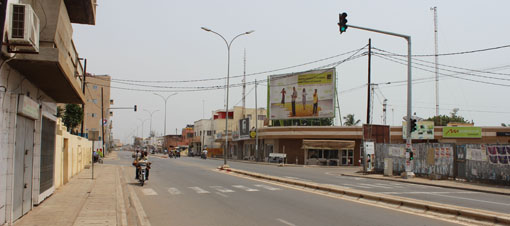 |
| |
Boulevard Circulaire in Lomé. Laid out still in the German protectorate time |
 |
The first hollow phrase that urgently needs to be abandoned is the pompous German claim to want to make the whole of Africa happy, without developing country-specific strategies. At this point, I would like to point out, in a sense with a warning finger, that in all attempts at cooperation between Europe and Africa - and explicitly Germany and some African states - the creative industry is constantly left out of the equation. Yet it is precisely this industry, with its structure of independent small and micro companies, that is closest to African structures and thus to planning solutions. The fragile games of high finance enriching a mostly European-American educated African elite is something else and does not exclude my proposals. |
Even more suggestions for collaborations
|
|
As this article appears at a time when Africa's youth are moving to Europe like steam from an overflowing pot, and European politics is beginning to split into two irreconcilable camps of rejection and welcome, each with no perspective, I emphasize, as a pragmatic connoisseur of many African countries, that the solution for supports lies in medium-term structural planning, a very important part of which promotes witty entertainment and pedagogy. |
|
In the foreseeable future, Africa will never become another commodity producer of the export economy on a large scale. The evolution away from its patrimonial structures is through subsistence-like small businesses that provide vocational training, as in Europe.
They run parallel to a development of cooperatively organized manufactories and medium-sized firms. This has nothing to do with backwardness and does not stand in the way of partial industrial developments. On the contrary, well skilled workers for industry are recruited from these structures, as was also the case in Germany until recently. |
 |
 |
And no society develops to an elevated culture without the arts. So stop with completely unnecessary discussions about guilt and atonement and open the doors for cooperation of creative people in Africa with Europe.
Art, design, craft and architecture are the solution words. Those who have learned something proper have less reason to go abroad, and if curiosity still drives him or her to Europe, they can earn solid money via a visa and don't have to pick tomatoes, walk the the street or sell grass. |
 |
| |
Much of what has to do with Africa in Germany seems to be a kind of job creation scheme with pretended moral demands, with more and more women promoting each other into key positions.
I remember that in the past, one argument for storing objects in museums was that people still wanted to do research on them. That's a laudable thing to do. If one would do it. Because sub-Saharan history can almost only be researched through art. But neither ethnology nor art history are involved in research on objects, or if they are, they do it very secretly. In Africa, in the trade, and with art mediators, none of it arrives in any case. Finally, I return to bronzes to describe a current state of affairs. |
| |
Each bronze contains details of stories and history that refer to fashions of the centuries, to campaigns, to social hierarchies, to gender relations, to trade, to laws. Even repetitive motifs they differ on trifles. I myself have been working on the subject of bronzes from West Africa for over 30 years now, and have never, I emphasize, never had a request from ethnologists regarding details. After five thematic exhibitions, each with great press coverage. I seriously ask myself what ethnologists and art historians who pretend to be concerned with ancient art from Africa are actually doing? |
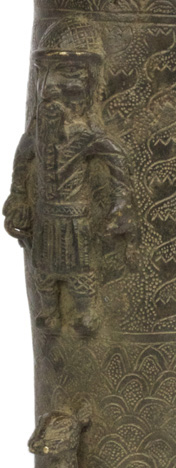 |
| Now, one could argue that, while albeit rare, every now and then there is an ethnological exhibition - but where were there any research results? The last two with results of research that I can remember were in the early 1990s. One on Nigerian bronzes. Significantly, however, in a jewelry museum in Pforzheim. A second, on animals in African art, with half a million visitors, curated by Klaus Paysan. That one in the Natural History Museum in Stuttgart. But I am not aware of any arthistorically elaborated exhibition of ancient African art, and with the exception of a single notable book, "Afrika und die Kunst - Africa and the Art" on German collection holdings with scholarly contributions, pretty little was offered from the art and history department's position. |
 |
Does art history now mean gender research in connection with exhamination of colonialism? Of course, there have been a number of other exhibitions in the last 25 years. But these only produced things from the warehouse, but not the results of any research. If we look at the very thick book "Benin - Kings and Rituals", undoubtedly monumental in the selection of objects, contributed by several museums, from this point of view, there is nothing new. Apart from the fact that the exhibition had to be renamed in Paris because of a title that was wrongly chosen in terms of content, nothing new emerged except its monumentality. A large coffee-table book consisting of already known objects and transcribed, slightly reworded texts. At least, and only for this reason I mention it, at least Nigerians had their say and were invited at the opening.
The last one to come up with actual research results was Dr. Stefan Eisenhofer in the 1990s. Regrettably, he was deprived of further research opportunities because of his proximity to trade, which he undoubtedly needed for his research, without deriving any privilege for himself. He had made the mistake, from today's cynical point of view, of not hiding his contacts like other ethnologists and of camouflaging financial advantages that he did not have as well as they had.
That is why ethnology, which definitely has not been effective with regard to Africa, should be dissolved in a process over the 20 or 30 years to come. Since the dissolution process will open up completely new perspectives on the magazines, this dynamic can be used for many exhibitions with new conceptions. A restitution debate, as it is today, can be ended just as easily. Through the process of dissolution, new accommodations for the objects involved can be considered in cooperation with scholars and curators from other countries.
II ask for imagination and wish pleasant conversations.
Peter Herrmann. Mid 2018 |
|











